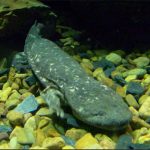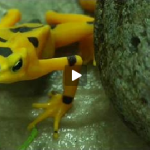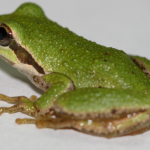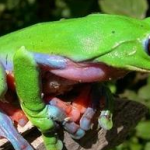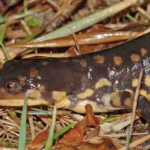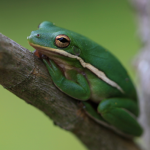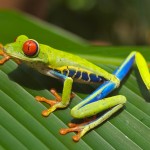Amphibia
Amphibians (class Amphibia), such as frogs, toads, salamanders, newts, and gymnophiona, are cold-blooded animals that metamorphose from a juvenile, water-breathing form to an adult, air-breathing form. Typically, amphibians have four limbs. Unlike other land animals (amniotes), amphibians lay eggs in water, as their fish ancestors did. Amphibians are superficially similar to reptiles but with some very distinct differences. For example, amphibians require water bodies to breed but reptiles don’t. Even though amphibians and reptiles are taxonomically separate, they are often grouped together in the branch of zoology referred to as Herpetology.
The amphibians are divided up into three Orders present today:
Anura
The Anura are the frogs and toads. The name anura comes from the two ancient Greek words “an-” meaning “without”, and “oura”, meaning “tail”. Typically the anuran lifecycle starts with eggs that are laid in water. The eggs then develop into tadpoles that look and function quite differently than their adult parents. At this larval stage they have no legs or lungs; instead the tadpoles have tails and internal gills. Their mouth parts are also different as they generally feed on plant material or plankton in the water. The tadpoles eventually metamorphose into adults. The gills disappear and the animal develops lungs to aid in its transition to a life out of the water. The front legs form first just under the gill sacs; after that the hind legs start to develop. Other sensory organs, like the eyes, develop and mouth parts completely change as the animal develops a big jaw. Last the tail is reabsorbed and it becomes fully dependent on its legs for movement.
Caudata
The Order Caudata includes the salamanders. The word comes from the Latin word for tail, cauda. They have a lizard-like appearance. Most have four legs but for some groups, such as the sirens and amphiurnas, the hind legs are very reduced making them look more like eels.
Many of the salamanders live their life in or near water, but there are some species that take on a fully terrestrial lifestyle. One incredible feature of salamanders is their ability to regenerate lost body parts and even whole limbs; they are the only group of vertebrates that can do this.
Gymnophiona
The gymnophionas are the Caecilians, a group of amphibians that look a lot like eels or large earthworms. The caecilians originally were thought to be snakes, which is where their names comes from: “gymnos” meaning “naked” in ancient Greek and “ophis” meaning “snake.” The name caecilian instead comes the latin word for “blind”, caecus, as they often have very small and reduced eyes.
The Caecilians are found around the world but mostly in tropical regions.
Classification
- Order Anura: 5,602 species of frogs and toads
- Order Caudata: 571 species of salmanaders and newts
- Order Gymnophiona: 174 species of caecilians

